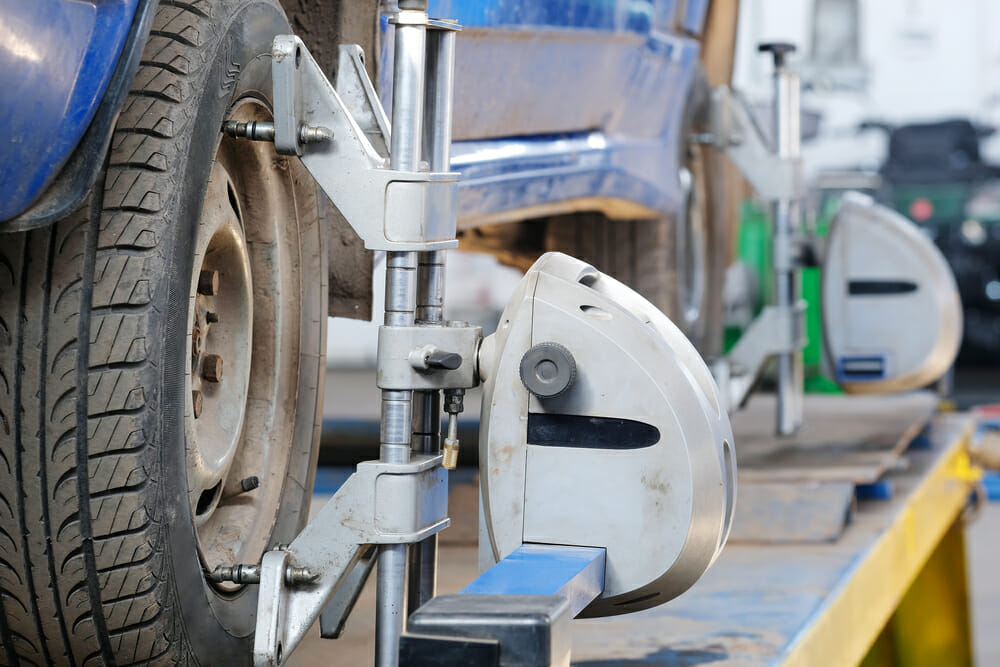How Long Does It Take To Fix An Alignment

Wheel alignment, a seemingly simple service, is crucial for vehicle handling, tire wear, and overall safety. For automotive professionals, understanding the factors influencing alignment repair time is essential for accurate service quoting, efficient workflow management, and ultimately, customer satisfaction. While a 'quick' alignment might seem appealing, a thorough and precise alignment requires time and expertise. This article delves into the intricacies of alignment repair timelines, exploring the technical aspects, influencing factors, and future trends impacting this vital service.
The Baseline: Average Time and Contributing Factors
The *average* time to perform a standard wheel alignment typically ranges from 30 minutes to one hour. However, this is a highly variable figure. The actual time can be significantly longer depending on several factors:
- Vehicle Type: More complex suspension systems, often found in luxury vehicles, sports cars, and heavy-duty trucks, require more intricate adjustment procedures.
- Extent of Misalignment: Severely misaligned vehicles, often resulting from collisions or significant road hazards, will require more time to diagnose and correct.
- Component Condition: Corroded, seized, or damaged suspension components (tie rod ends, control arms, ball joints) will necessitate replacement before alignment can be accurately performed. This adds considerable time to the overall service.
- Technician Skill and Experience: An experienced technician with a thorough understanding of suspension geometry can perform the alignment more efficiently and accurately.
- Equipment Calibration: Properly calibrated alignment equipment is paramount. Outdated or poorly maintained equipment can lead to inaccurate measurements and prolonged service times.
- Accessory Features: Vehicles equipped with advanced driver-assistance systems (ADAS) like lane departure warning and adaptive cruise control may require post-alignment calibration, adding further time to the process.
Technical Specifications and Engineering Choices Impacting Time
Different vehicle manufacturers employ varying suspension designs, each with its own alignment adjustment procedures. Some common systems include:
- Double Wishbone Suspension: Often found in performance vehicles, this system offers precise control over wheel geometry. Adjustments typically involve shims or eccentric bolts on the control arms. This can be time-consuming, especially when dealing with multiple adjustments.
- MacPherson Strut Suspension: A common design used in front-wheel-drive vehicles. Camber and caster adjustments are often limited and may require special tools or aftermarket camber plates.
- Solid Axle Suspension: Primarily found in rear-wheel-drive trucks and SUVs. Alignment adjustments are limited to toe, often requiring shimming or bending the axle housing in extreme cases.
The engineering choices made by the manufacturer directly influence the ease and speed of alignment. For example, vehicles with readily accessible and easily adjustable eccentric bolts allow for quicker adjustments compared to systems requiring shimming or component replacement.
Real-World Performance and Alternatives
A 'quick' alignment often focuses solely on adjusting toe, neglecting camber and caster. While this might temporarily improve tire wear, it fails to address the underlying suspension issues that contribute to misalignment. A comprehensive alignment, on the other hand, addresses all three angles, ensuring optimal handling and tire wear. This, of course, takes more time.
Alternatives to traditional alignment include:
- DIY Alignment Kits: These kits offer a cost-effective solution for basic toe adjustments, but they lack the precision and accuracy of professional equipment and expertise. This is generally not recommended for vehicles requiring precise alignment.
- Mobile Alignment Services: These services offer convenience, but the quality of the alignment can vary depending on the technician's skill and the equipment used. Verify the technician's qualifications and equipment calibration before engaging their services.
Pros and Cons: Speed vs. Accuracy
| Feature | Quick Alignment | Comprehensive Alignment | DIY Alignment | |-----------------|--------------------------|-------------------------------|----------------------------| | Time | Fast (under 30 minutes) | Slower (30-60+ minutes) | Variable (requires learning)| | Accuracy | Limited | High | Low | | Cost | Lower | Higher | Lowest | | Tire Wear | Marginal improvement | Significant improvement | Minimal improvement | | Handling | Marginal improvement | Significant improvement | Minimal improvement | | Expertise Required | Low | High | Low to Moderate | | Reliability | Lower | Higher | Lower |
Reliability Aspects and Maintenance Tips
The longevity of an alignment depends on driving conditions and vehicle maintenance. Regular inspections of suspension components, including tie rod ends, ball joints, and control arm bushings, are crucial for maintaining alignment. Addressing any worn or damaged components promptly will prevent premature misalignment and extend tire life. Avoid hitting potholes and curbs, as these can easily knock a vehicle out of alignment.
Future Trends
The automotive industry is rapidly evolving, with increasing reliance on ADAS and electric vehicles. Future trends in alignment include:
- ADAS Integration: Alignment will become increasingly integrated with ADAS calibration. Precise wheel alignment is essential for the proper functioning of these systems.
- Electric Vehicle Considerations: The unique weight distribution and suspension designs of electric vehicles will require specialized alignment procedures.
- Automation: Automated alignment systems are being developed to improve accuracy and efficiency. These systems utilize robotic arms and advanced sensors to perform alignment adjustments.
Forward-Looking Note
Wheel alignment is no longer a simple task; it's a critical aspect of modern vehicle maintenance. As vehicles become more complex and technologically advanced, the importance of accurate and comprehensive alignment will only increase. Automotive professionals must stay abreast of these changes, investing in the necessary training and equipment to provide high-quality alignment services that meet the evolving needs of the automotive industry. By prioritizing accuracy and thoroughness over speed, service providers can build trust with their customers and ensure the safety and performance of their vehicles.
